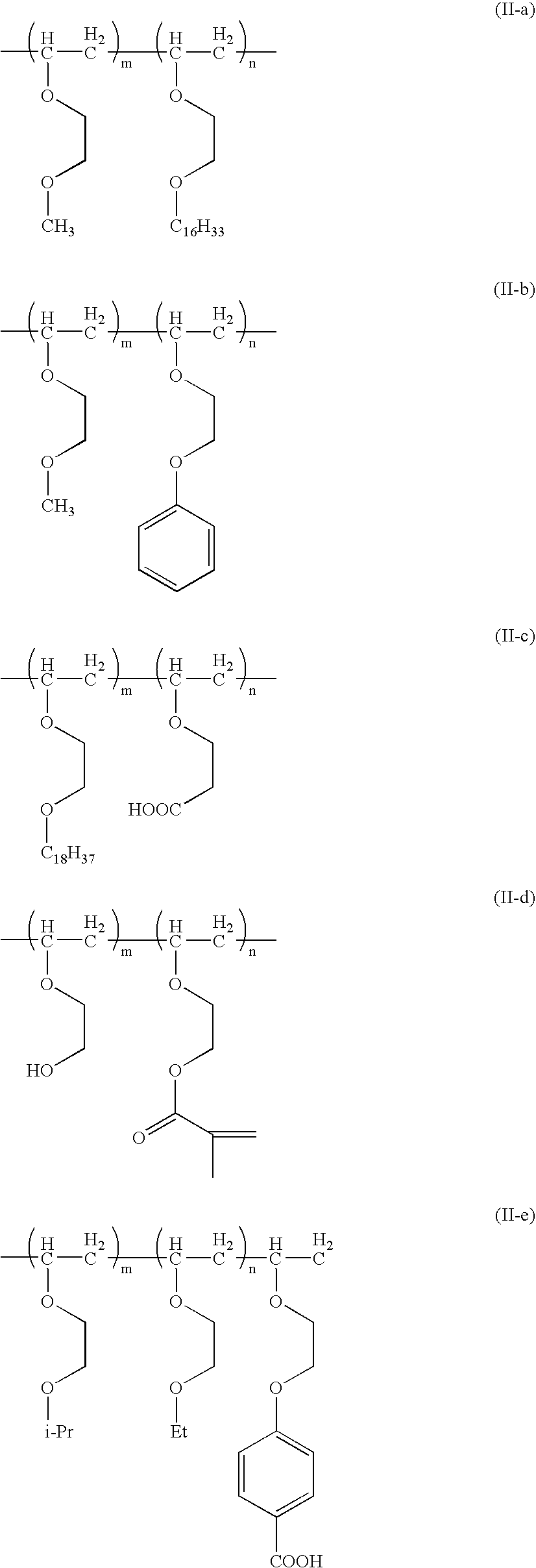Image recording method
a technology of image and recording method, which is applied in the field of image recording method, can solve the problems of image prone to fading, and the tinting efficiency of water-based dispersion inks with pigments contained therein is lower, so as to improve the resolution and improve the feedability. , the effect of strong ink fixing property
- Summary
- Abstract
- Description
- Claims
- Application Information
AI Technical Summary
Benefits of technology
Problems solved by technology
Method used
Image
Examples
example 1
[0117] A coating formulation was prepared by combining a mixture of the aluminium hydrate dispersion B (100 parts, solid content: 17%) and a 3% aqueous solution of boric acid (17.0 parts; 3% based on the aluminium hydrate) with a solution of polyvinyl alcohol (“PVA-235”, trade name; product of Kuraray Co., Ltd.; 1.7 parts) in water (15.3 parts). The coating formulation was next applied to a polyethylene-coated paper (60-deg. specular gloss of the surface to be coated as measured by JIS Z 8741: 64%) by die coating to give a dry coat weight of 35 g / m2. In an oven (manufactured by Yamato Scientific Co., Ltd.), the thus-coated paper was then dried with hot air at 100° C. for 15 minutes to form an ink-receiving layer. Further, a 0.5 N aqueous solution of sulfuric acid was overcoated on the ink-receiving layer by the bar coating method such that the pH of the surface of the ink-receiving layer was adjusted to 3.5 to afford a recording medium (1).
[0118] Next, evaluation of the image recor...
example 2
[0123] A recording medium (2) was prepared in a similar manner as in Example 1 except that the aluminium hydrate dispersion B was replaced by the aluminium hydrate dispersion C and the surface pH of the ink-receiving layer was adjusted to 4.7. Ink-fixing property was then ranked in a similar manner as in Example 1 except that the recording medium (1) was changed to the recording medium (2). The results are presented in Table 1.
example 3
[0126] To the aluminium hydrate dispersion B (100 parts; solid content: 17%), a 3% aqueous solution of boric acid (17.0 parts (3% based on the aluminium hydrate) “XCPP104” (trade name, product of Mitsui Chemicals, Inc.; 30% dispersion, particle size: 35 nm, glass transition temperature: 100° C.; 5.67 parts (10% based on the aluminium hydrate)) as cationic fine organic particles and “PAA-HCL-3L” (trade name for an allylamine polymer; 50% aqueous solution; product of Nitto Boseki Co., Ltd.; 0.68 parts (2% based on the aluminium hydrate)) as a cationic polymer were added. The resulting mixture was combined with a solution of polyvinyl alcohol (“PVA-235”, trade name; product of Kuraray Co., Ltd.; 1.7 parts) in water (15.3 parts) to prepare a coating formulation. The coating formulation was next applied to a polyethylene-coated paper (60-deg. specular gloss of the surface to be coated as measured by JIS Z 8741: 64%) by die coating to give a dry coat weight of 35 g / m2. The thus-coated pap...
PUM
| Property | Measurement | Unit |
|---|---|---|
| glass transition temperature | aaaaa | aaaaa |
| particle size | aaaaa | aaaaa |
| wt. % | aaaaa | aaaaa |
Abstract
Description
Claims
Application Information
 Login to View More
Login to View More - R&D
- Intellectual Property
- Life Sciences
- Materials
- Tech Scout
- Unparalleled Data Quality
- Higher Quality Content
- 60% Fewer Hallucinations
Browse by: Latest US Patents, China's latest patents, Technical Efficacy Thesaurus, Application Domain, Technology Topic, Popular Technical Reports.
© 2025 PatSnap. All rights reserved.Legal|Privacy policy|Modern Slavery Act Transparency Statement|Sitemap|About US| Contact US: help@patsnap.com



